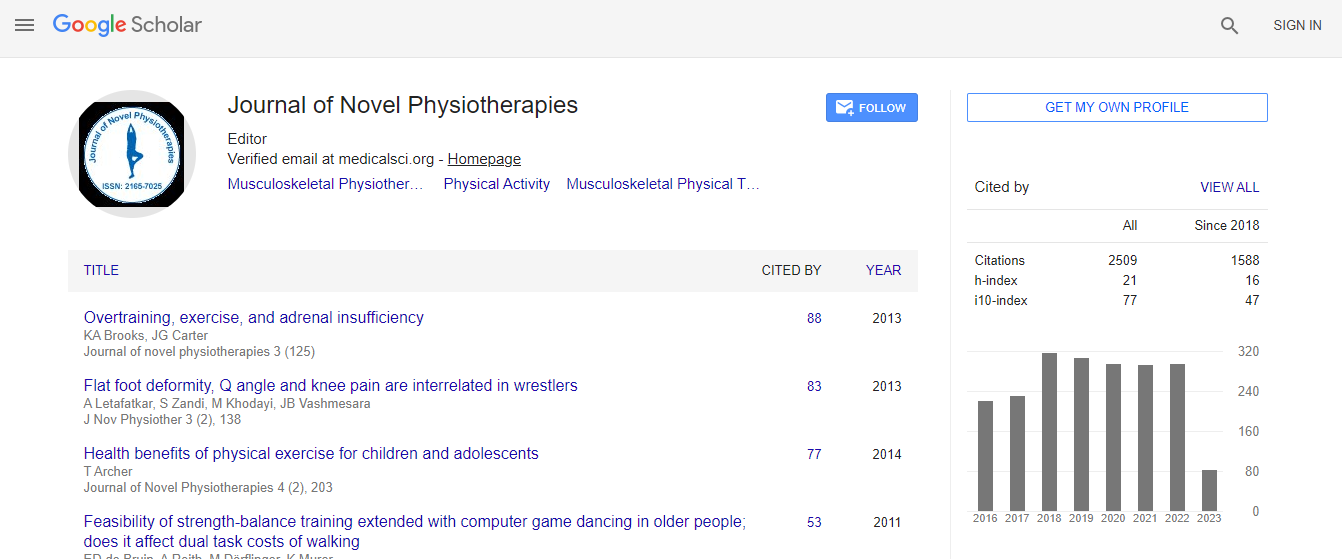Research Article
Effects of Skin Stretch Sensory Stimuli on Balance in Patients with Diabetic Neuropathy
Mohammad Akbari1, Mehdi Dadgoo1, Ismail Ebrahimi1and Sedigheh Moradi21Department of Physical Therapy, Tehran University of Medical Sciences, Tehran, Iran
2Department of Internal Medicine, Tehran University of Medical Sciences, Tehran, Iran
- *Corresponding Author:
- Dr. Mehdi Dadgoo
Department of Physical Therapy
School of Rehabilitation
Po. Co: 1545913187, Tehran, Iran
Tel: 98 21 22227124
Fax: 98 21 22220946
E-mail: Mehdidadgoo@yahoo.com
Received date : November 01, 2011; Accepted date : November 18, 2011; Published date : December 10, 2011
Citation: Akbari M, Dadgoo M, Ebrahimi I, Moradi S (2011) Effects of Skin Stretch Sensory Stimuli on Balance in Patients with Diabetic Neuropathy. J Nov Physiother 1:105. doi:10.4172/2165-7025.1000105
Copyright: © 2011 Akbari M, et al. This is an open-access article distributed under the terms of the Creative Commons Attribution License, which permits unrestricted use, distribution, and reproduction in any medium, provided the original author and source are credited.
Abstract
Aims: The purpose of this study was to estimate the effects of stretch sensory stimuli on legs skin and upper back on balance in patients with diabetic peripheral neuropathy.
Methods: Overall, 17 diabetic patients with sensory neuropathy aged 44.99 ±3.93years old were engaged, to estimate the effects of one session sensory stimuli by kinesiotape on balance. Balance indices were assessed by Biodex Balance System (BBS) and center of pressure parameters were measured with Bertec Force Plate (BFP) on firm and foam surfaces. All tests were done in eyes open and eyes closed conditions in bilateral standing position.
Results: There were significant differences in all stability indices under closed- versus open-eyes conditions. In addition, there were significant differences in center of pressure parameters following sensory stimuli while standing on a firm and 15-cm foam surfaces. The sensory stimuli of kinesiotape in the antero-posterior direction under eyes closed condition were significantly greater than the eyes open.
Conclusions: Using of kinesiotape in legs and upper back can improve balance abilities of patients with diabetic peripheral neuropathy. Especially it is useful during standing on unstable surface or with problem of the eyes.

 Spanish
Spanish  Chinese
Chinese  Russian
Russian  German
German  French
French  Japanese
Japanese  Portuguese
Portuguese  Hindi
Hindi 
